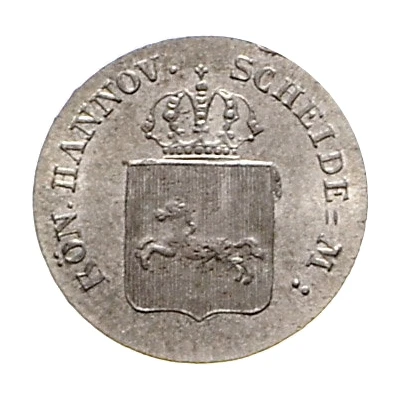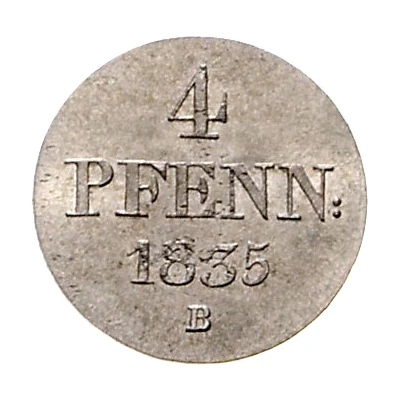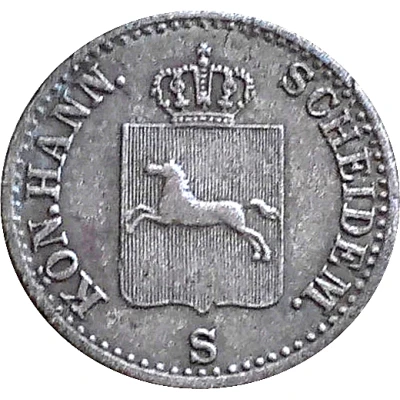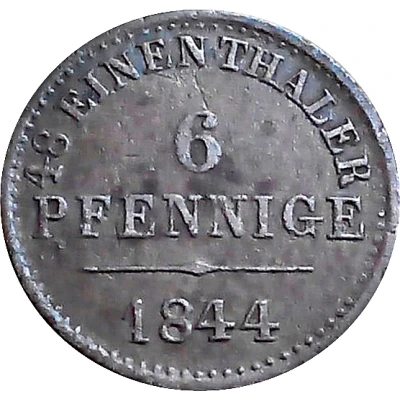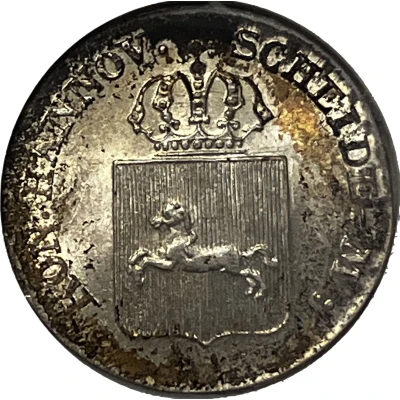
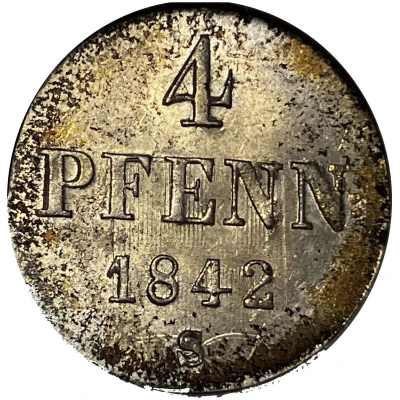

© dbasedman
4 Pfennige - Ernest August
| Billon (.218 silver) | 0.92 g | 16 mm |
| Issuer | Kingdom of Hannover (German States) |
|---|---|
| King | Ernest Augustus I (Ernst August I) (1837-1851) |
| Type | Standard circulation coin |
| Years | 1838-1842 |
| Value | 4 Pfennigs (4 Pfennige) (1⁄72) |
| Currency | Thaler (1814-1866) |
| Composition | Billon (.218 silver) |
| Weight | 0.92 g |
| Diameter | 16 mm |
| Thickness | 0.75 mm |
| Shape | Round |
| Technique | Milled |
| Orientation | Medal alignment ↑↑ |
| Demonetized | Yes |
| Updated | 2024-10-05 |
| Numista | N#49645 |
|---|---|
| Rarity index | 69% |
Reverse
Denomination, S below date
Script: Latin
Lettering:
4
PFENN:
1842
S
Edge
Plain
Interesting fact
One interesting fact about the 4 Pfennige coin from the Kingdom of Hannover is that it was minted during a time of economic turmoil in Germany. The coin was introduced in 1838, just a few years after the German states had adopted the Vereinsthaler, a standardized currency system, in an attempt to stabilize the economy. Despite these efforts, the coin still had a relatively low value and was made of a base metal alloy, Billon, which was composed of only 0.218 silver. This highlights the economic challenges faced by the German states during this period.
